
At its core, topical authority SEO is just a fancy way of saying “relevancy.” It’s about how much expertise and credibility your website has on a particular subject.
Building a topical authority in SEO is necessary for your website to rank and achieve long term SEO success.
Think of it this way: If your website consistently publishes high-quality, in-depth content on a specific topic, and attracts quality backlinks, people (and search engines) start recognizing it as a go-to source. That’s topical authority seo in action.
So, how do you measure it? A few key factors:
- Engagement & Interaction: Are people spending time on the site, reading articles, and leaving comments?
- Backlinks: Are other authoritative sites linking to it as a trusted resource?
And here’s an important thing to remember: Google doesn’t scan your entire website to “understand” it. Instead, it looks at your content and how well it aligns with a specific topic.
By building SEO topical authority, you’re helping search engines (and users) see your site as a reliable source, making it more likely to rank for related keywords.
What Is an Example of a Topical Authority SEO
Let’s say you want to rank for “birthday gifting.” You write one fantastic article titled “The Ultimate Guide to Birthday Gifts”—but is that enough to compete? Probably not.
Why? Because “birthday gifting” is a broad topic, and one post can’t cover everything people search for.
To build topical authority in SEO, you need to go deep. That means creating a topical map with multiple articles covering different angles, such as:
- Gift ideas by age group (Kids, Teens, Adults, Seniors)
- Last-minute birthday gift ideas
- Budget-friendly birthday gifts
- Handmade & DIY birthday gifts
- Cultural differences in birthday gifting
What Is a Topical Map
Now, in case you were wondering…What is a topical map?
Think of a topical map as an outline of all the main topics and subtopics you aim to cover to become an authority in a topic.
Let’s say your main niche is pet care. Under this main topic, you will have main categories such as dog care, cat care and horse care.
For these main categories, you will have subcategories.
For example, under “dog care,” you might have subcategories like “best diets for senior dogs,” “how to train a rescue dog,” and “common health issues in small breeds.”
Think of these as an hierarchy. Of course you will create sucategories for cat care and horse care. But you get the idea 🙂
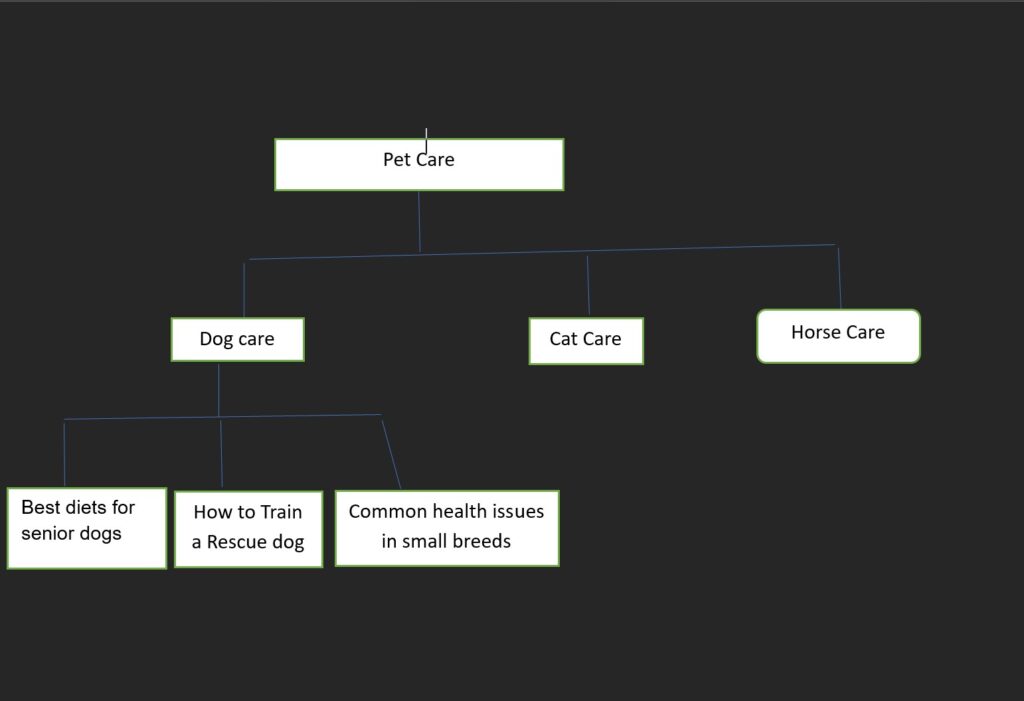
By creating content around these topics and building links you develop topical authority SEO. A well-planned SEO topical mapping helps organize these topics effectively, making it easier for search engines to understand your site’s relevance.
When you start ranking for related keywords you didn’t even target, that’s a sign you’re building credibility in your niche.
Internal linking between your articles strengthens your site’s authority by showing search engines how well you cover the topic through topical mapping.
What If Your Niche Is Too Competitive or Too Broad?
If your niche is too broad, it’ll take a lot of work to build authority—you’ll need to cover a massive range of topics. Instead, narrow your focus to a specific sub-niche or audience.
For example, instead of “personal finance,” target money-saving tips for freelancers or budgeting for first-time homeowners.
Research your topical map SEO strategy well to help you break down large topics into manageable, rankable sections.
If your niche is highly competitive, backlinks become essential—but they’re not enough. To stand out, focus on long-tail keywords, original research, and unique case studies that big competitors aren’t covering.
Example: Instead of competing with industry giants on “SEO strategies,” create content like “How to create a topical map SEO for local service businesses” or a case study on how a small business tripled its organic traffic using topical maps SEO.
The key is differentiation—whether through niche focus, content uniqueness, or strategic backlinks.
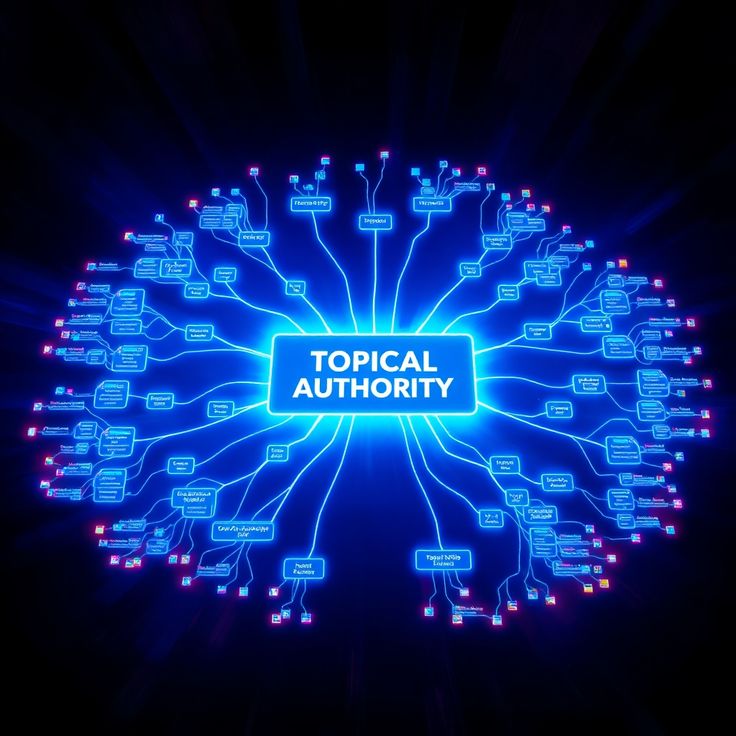
How Does Google Measure Topical Authority SEO?
There’s no single metric that tells you, “Hey, you’ve got SEO topical authority!” Instead, Google looks at a mix of signals to determine whether a site is truly authoritative on a subject.
But, there are some workarounds you can use to get an idea of your topical authority in SEO:
- SEMrush Trick: To see how much credibility your site has for a specific topic or keyword:
- Go to the Keyword Overview tool in SEMrush.
- Enter your target keyword in the search bar.
- Add your domain in the “AI-powered feature” section.
- Select your target location and hit “Search.”
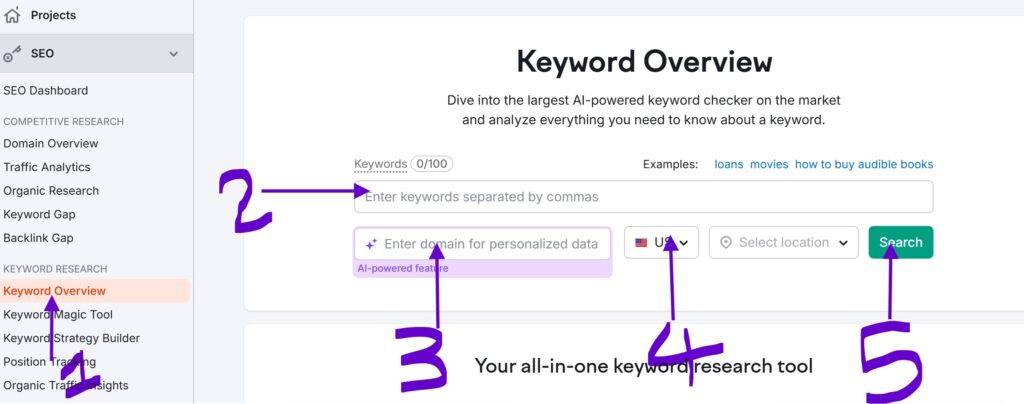
Check your rating under the “Topical Authority” label—it’ll show as Low, Moderate, Relevant, or High.
- Ahrefs’ Traffic Share by Domains (via Kevin Indig’s method):
- Enter a broad term (like “ecommerce”) in Keywords Explorer.
- Go to the Matching Terms report and set a minimum volume of 10.
- Export the keywords and reupload them into Keywords Explorer.
- Check the Traffic Share by Domains report.
- Traffic share ≈ topic share = a rough proxy for topical authority SEO.
That said, SEO topical authority isn’t a hard metric—they’re a blend of ranking signals Google uses to determine expertise on a subject. More rankings and more traffic can be good indicators, but they could also just be the result of strong link-building or other SEO efforts.
Why Is Topical Authority Important in SEO?
The more in-depth and authoritative your content is on a subject, the higher your chances of ranking well for related search queries.
But what does ranking really mean?
When someone searches for something, search engines scan their index for the most relevant content and organize it in a way that best answers the query.
This ordering of results is what we call ranking—and the higher your website appears, the more relevant Google believes it is.
Google Uses Topical Authority SEO to Rank Content
Google doesn’t just look at individual keywords—it looks at how well your site covers an entire topic. If you consistently publish high-quality content around a specific subject, Google sees you as an expert resource and is more likely to rank your content higher.
A well-structured SEO topical map ensures your content interlinks logically, guiding both users and search engines through your expertise.
This also helps with internal linking—making it easier for users (and search engines) to find and navigate your content, which can lead to more organic backlinks over time.
Benefits of Topical Authority in SEO Content Planning
If you’re serious about building a sustainable content strategy, topical authority should be your foundation. Instead of chasing short-term wins or jumping on random keywords, focus on topical authority SEO to ensure consistent, long-term growth.
By establishing authority in your niche, you’re essentially creating a lasting SEO asset. A well-structured, authoritative content strategy helps you:
- Stay focused on your niche instead of spreading your efforts too thin
- Make smarter SEO decisions that drive real, lasting results
- Distribute and repurpose content effectively to maximize reach
- Use data insights from analytics & search console to refine your approach
- Continuously improve performance by adapting to trends and user needs
Topical Authority Pays Off Over Time
Unlike quick SEO hacks that fade with algorithm updates, SEO topical maps build compounding results. The more in-depth content you create, the stronger your authority becomes—helping you rank for not just one keyword, but entire topics.
This means:
🔹 Higher rankings for competitive search terms
🔹 More organic traffic from multiple related queries
🔹 Increased brand trust and credibility
🔹 Stronger internal linking for better site structure
🔹 More natural backlinks as others cite your expertise
As your site grows into a go-to resource, your brand will be automatically associated with key topics—giving you an edge over competitors and securing long-term SEO success.
Now that you understand why is topical authority SEO important, learn how to create a topical map SEO in the following step by step process.

How Can Brands Build Topical Authority Through Strategic Content Planning
How do you build topical authority in SEO? Think of it like creating a roadmap for your content strategy.
You need a clear plan that guides your efforts so Google (and your audience) recognize you as a trusted expert in your field.
That’s where a SEO topical map comes in—it helps structure your content for maximum impact.
Step One: Pick Niche
To build real SEO topical authority start with choosing the right niche—one that aligns with your expertise, your audience’s needs, and your industry.
By expert, I mean really knowing it—inside and out. You should be able to spot trends, offer fresh insights, and stay ahead of the curve. That’s how you establish true authority.
Trying to cover everything? That’s a mistake. Spreading yourself too thin weakens your credibility. Instead, focus on the topics where you can genuinely add value, and your audience (and Google) will take notice.
What Should Guide Your Niche Choosing Process?
Choose a niche with enough depth to sustain long-term content creation. This is where you need a SEO topical map to ensure interconnectedness between concepts as you go deep.
Here’s what you need to keep in mind:
1. It Has to Be Broad Enough (But Not Too Broad)
Your niche should be big enough to allow for at least 100+ articles. If you can cover everything in just 10-15 posts, you’re probably too niched down.
For example, let’s say you want to start a home organization blog. Writing just a few articles on decluttering won’t make an impact.
You’ll need to go deeper, covering topics like minimalist storage solutions, organizing by room, decluttering challenges, and productivity tips.
But even then, “Home Organization” might be too broad without a focused angle.
Good Broad Topic: “Home Organization for Busy Professionals” → This allows you to get deeper into time-saving organization hacks, smart storage ideas, and minimalist setups for small spaces.
Too Niched down: “Decluttering Your Desk at Work” → Too specific. Limited long-term potential.
2. Cover What People Actually Care About
Don’t just write about what you think people want—use data to confirm demand. Researching topical mapping helps ensure you’re targeting the right subtopics. Use these tools:
✅ Google Trends → Identify growing interests.
✅ Reddit & Quora → See what real people are asking.
✅ Social Media → Find trending discussions in your niche.
Example: If you’re in the parenting space, and you notice parents struggling with screen time limits for kids, that’s a goldmine for topical authority in SEO!
3. Analyze the Competition (Then Do It Better)
Look at what your competitors are covering—but don’t just copy them. Find their gaps and weaknesses. Spot content opportunities that others have overlooked and use those to strengthen your SEO topical maps.
If every travel blog is focused on luxury destinations, carve out your own space by becoming the go-to source for budget-friendly adventure travel. Zig when others zag.
And don’t assume competitors have all the right answers—they might be outdated or missing key insights. Do your research and bring fresh, practical advice to the table.
4. Plan for the Long Game
Your niche should still be relevant years from now. Avoid chasing fads—they fade fast.
While it’s smart to write about what people search for, don’t rely solely on current search trends. Search behavior changes, and some of the most valuable content is ahead of the curve.
A well-structured topical authority SEO ensures long-term content growth, helping your website stay relevant and authoritative.
Pick a niche that allows for long-term content growth.
Step Two: Own Your Niche
Now that you’ve chosen your niche for topical authority SEO, it’s time to dominate it—and that starts with topic clusters.
Build Topic Clusters
Rather than chasing one-off keywords, think about related topics and subtopics.
Think of these topics and subtopics like a web of connected ideas for your SEO topical map, rather than standalone posts.
You are building clusters of related content around your niche or central theme.
Your goal is to cover everything a reader would expect to see when researching a subject.
For example, let’s say your niche is birthday gifting. That’s your seed keyword, and from it, you can build categories and subcategories that capture everything people search for within that space.
This is the foundation of a SEO topical map.
How to Identify the Right Topics and Subtopics for Your Niche
Your core niche is the foundation. From there, you’ll branch out into relevant subtopics, forming a topical map SEO framework.
To find the right subtopics—the ones people are actively searching:
Hunt for the Questions People Are Asking
People go online with questions—your job is to provide the best answers. These questions make great content ideas for your topic clusters and your entire topical mapping strategy.
The stronger your clusters, the more your site signals topical authority SEO to Google.
Where to Find Them:
- Google’s “People Also Ask” section – Just type in your keyword and see what questions pop up.
- Answer the Public – This tool visualizes common search queries.
- Reddit & Quora – Real people asking real questions. Search your keyword and take note of recurring topics.
Example: Let’s say your core topic is pet nutrition. A quick dog nutrition search on reddit reveals questions like:
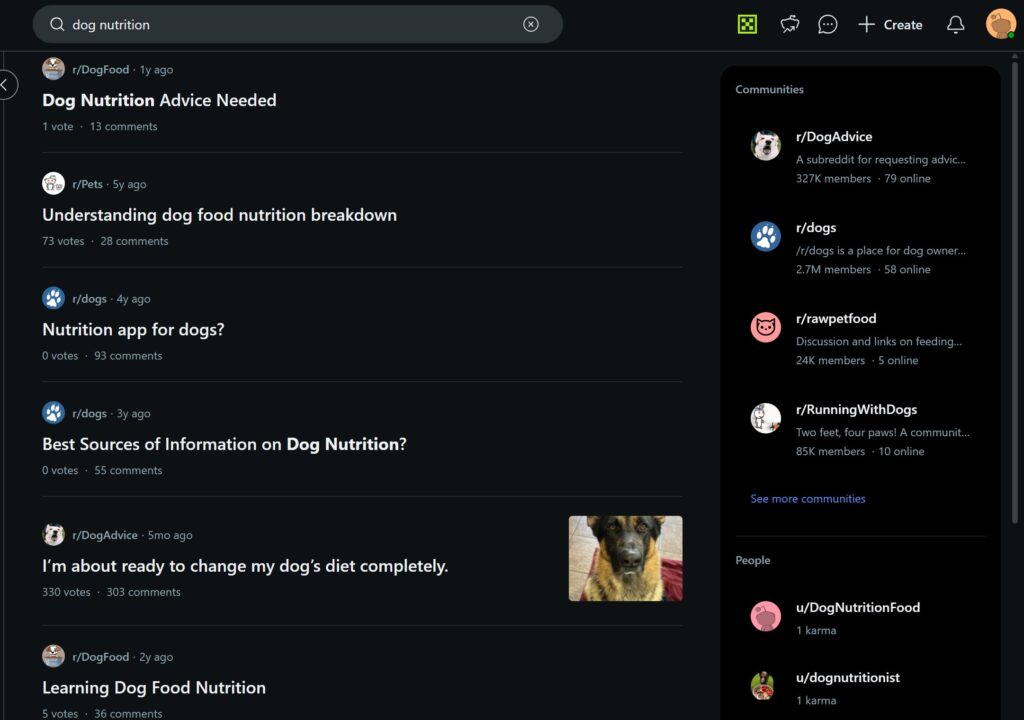
You can even click on a search to go deeper.
Each of these could be a subtopic under your topical map for pet nutrition.
Spy on the Search Results (SERPs)
Want to know what’s working? Look at who’s already ranking! Google your core topic and analyze the top search results.
In your quest look for:
- What subtopics are they covering?
- Are there gaps you can fill?
- What angles haven’t been explored in depth?
Get More Strategic With Keyword Research Tools
To ensure your content contributes to topical authority SEO you also need to consider search intent and enough search volumes.
That kind of content actually drives traffic.
Focus on search intent—not just what people are searching for, but why they’re searching for it.
This means identifying high-value topics that:
- Have strong search traffic potential
- Align with what your audience wants to know
- Help you rank as a trusted expert
This is where you take things to the next level. Use tools like Ahrefs, SEMrush, or Google Keyword Planner to dig deeper. These tools will help you uncover search volume, keyword difficulty and other related synonyms or keyword variations.
Example:
If your seed keyword is “eco-friendly packaging”, a tool like SEMrush might suggest related terms such as:
- “Biodegradable shipping materials”
- “How to reduce plastic in product packaging”
- “Cost comparison: Recyclable vs. compostable packaging”
I often use SEMrush to identify low-volume but high-potential keywords, then confirm their potential using Google Keyword Planner and Google Trends.
Want to see my guide on how to perform keyword research and analysis that builds your topical map SEO strategy?
Aim For Low-Volume Keywords
Not every great keyword has high search volume—and that’s okay! Sometimes, smaller, specific searches bring in the most engaged audience.
Why Low-Volume Keywords Matter:
- They have less competition, making them easier to rank for.
- They attract a more targeted audience—people searching for these are closer to making a decision.
Example:
If your core topic is “home coffee brewing,” don’t just target broad keywords like “best coffee makers”. Instead, create content for:
- “Best grind size for French press coffee”
- “How water temperature affects coffee flavor”
- “Aeropress vs. Pour-over: Which makes better coffee?”
Even though these terms don’t have huge search volumes, they attract passionate coffee enthusiasts looking for specific information.
They build topical authority SEO by offering highly relevant, useful information.
Think Beyond Just Informational Keywords
Most people focus on top-of-the-funnel (TOFU) keywords—meaning broad, general topics that attract first-time searchers. That’s important, but don’t stop there.
Middle-of-the-funnel (MOFU) keywords are even more valuable because they attract people who are closer to making a decision.
Example: If your core topic is travel gear, instead of just writing “How to pack for a trip” (TOFU), also cover:
- “Best carry-on luggage for frequent travelers” (MOFU)
- “Pros & cons of hard-shell vs soft-shell suitcases” (MOFU)
These decision-based topics help move readers closer to taking action (like buying a product or hiring a service).
Try to find keywords for every stage of the customer’s journey, not just informational keywords.
Turning Your Keywords into Core Topics and Subtopics
By now, you probably have a solid list of questions and pain points related to your niche. This also includes keywords that you picked based on search volume, keyword difficulty, etc.
Think of these as your building blocks—each one is a potential topic waiting to be developed.
The next step in topical authority SEO is to organize them into a clear content structure.
Group these keywords based on content themes to form a SEO topical map.
Start by grouping similar keywords together and creating 3-4 main categories that cover the broadest aspects of your niche.
This is the essence of topical mapping—structuring your site in a way that makes sense for both users and search engines.
These main topic clusters act like hubs, linking related pages together. Not only does this topical map SEO make your content strategy more structured, it also makes internal linking much easier down the road.
You are keeping relevant content connected, making it easier for both users and Google to navigate your site—boosting discoverability and authority at the same time. This greatly improves your SEO topical authority.
Example:
If your niche is sustainable living, your core topics might be:
- Eco-Friendly Home Hacks
- Sustainable Fashion
- Zero-Waste Living
- Green Travel Tips
Each of these will act as an umbrella category for your content.
These pages should be well structured with enough content to be useful as stand-alone articles but also link to more in-depth articles within the topic.
Break Them Down into Subtopics
Once you have your core topics, branch out into supporting topics. Use your keyword ideas to go deep. These should answer the common questions and challenges people have within each category.
💡 Example (Expanding “Zero-Waste Living”)
- Beginner’s Guide to a Zero-Waste Kitchen
- Composting 101: How to Reduce Food Waste
- DIY Zero-Waste Cleaning Products
- How to Ditch Plastic at the Grocery Store
Instead of one general post, you now have a series of niche-specific topics that all feed into your main topic.
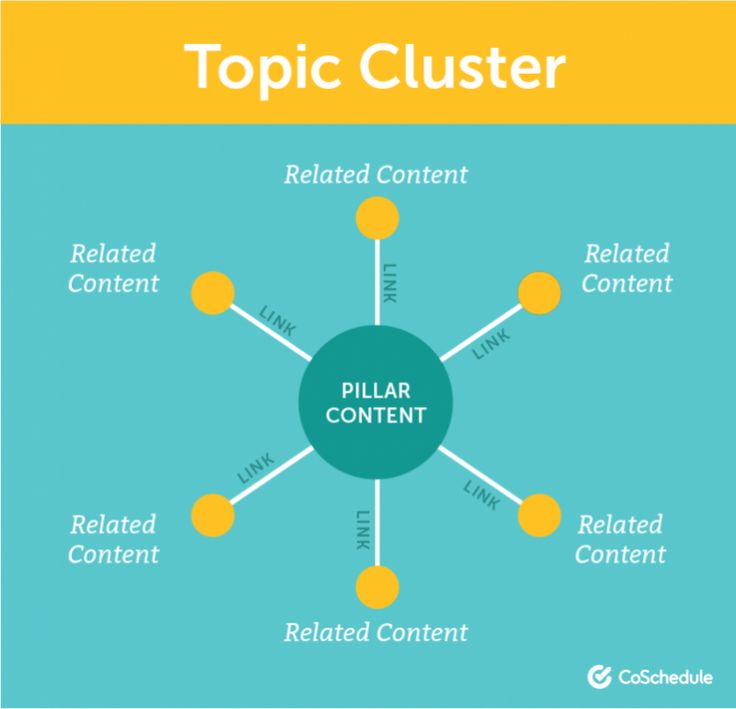
Step Three: Create High-Quality, In-Depth Content
Now that you’ve mapped out your core topics, supporting topics, and content formats, it’s time to bring them to life.
This part should feel natural—after all, you’ve already done the heavy lifting with keyword research and topic clusters.
Now, it’s just about turning those insights into valuable, well-structured content that helps your audience and builds your topical authority SEO.
Focus on User Intent (Not Just Keywords)
Great content is all about answering real questions and solving problems. The keywords you generate before should help you write to match your searcher’s intent.
Before you start writing, ask yourself:
- What does my audience actually want to know?
- What’s the best way to deliver this information?
- Am I matching search intent?
For Example:
- If someone searches for “How to start a home garden,” they want a step-by-step guide—not a history lesson on gardening.
- If they search “Best plants for small apartments,” they expect a curated list, not a general gardening article.
Want to read more about search intent?
Start with Pillar Content
Your pillar pages should be comprehensive, long-form guides that serve as the go-to resource on a key topic. These are broad but highly valuable pages that establish your topical authority SEO.
💡 Example: If your niche is personal finance, a pillar page could be “The Ultimate Guide to Budgeting.” Supporting topics might include:
- “How to Create a Budget from Scratch”
- “Best Budgeting Apps for Beginners”
- “Zero-Based Budgeting vs. Envelope Budgeting”
These subtopics go deeper into different angles of the main topic, giving your audience a complete knowledge base and following a SEO topical map strategy that builds authority.
Build Authority with Depth & Value
Your goal isn’t just to get views—it’s to turn visitors into engaged readers (and eventually, customers). That means:
- Go beyond surface-level content—cover topics thoroughly. Depth beats length every time. Focus on useful, engaging, and thorough content, and you’ll stand out as the go-to expert in your field.
- Make your content actionable—add tips, steps, and real-world examples. Use case studies and real-world examples. Include data-driven insights.
- Focus on conversions—don’t just attract passive readers, guide them toward the next step (whether that’s subscribing, booking a consultation, or making a purchase). Offer actionable takeaways.
Pro Tip: Don’t try to cover everything at once. Master one topic first before moving on. Example: If you’re tackling “Digital Marketing for SaaS”, fully cover it before jumping into “Web Design for SaaS.”
Perform Competitor Analysis
Look at the top 3–5 ranking articles for your topic and ask yourself:
How are they covering their topics?(Headings, subtopics, word count, visuals).
What do they miss?
(Where can you add more value?) How can you present yours in a different angle?
Your goal is to outdo them by making your content more useful and engaging.
Create Content Briefs (Your Roadmap to Great Content)
Before you write, outline your article:
📝 What’s the goal of the content?
📝 Which subtopics should be covered?
📝 What format works best? (Listicle, how-to, case study, etc.)
A good content brief keeps you focused and ensures your article delivers value and builds on your SEO topical authority map.
Make Your Content Engaging (So People Actually Stick Around)
Creating great content is also about how you say it.
If your audience is bored, they’re gone.
Use More Than Just Words
Text alone can only do so much. Mix it up!
✅ Add visuals – Infographics, charts, screenshots
✅ Use videos – Explainer clips, tutorials, or even GIFs
✅ Make it interactive – Quizzes, polls, or step-by-step guides
Example: If you’re explaining keyword research, include a visual breakdown of the process. A well-designed infographic beats a wall of text any day.
If you’re using third-party images, add your own spin—overlay text, highlight key areas, or provide context. And don’t forget alt text to help images rank on Google.
Write Like You’re Talking to a Friend
Ever notice how some articles feel like a conversation, while others feel like a textbook? Be conversational!
✔️ Use engaging, even “questionable” headlines – “Are You Making These Topical Mapping Mistakes?”
✔️ Inject personality – No one wants to read dry, robotic content
✔️ Keep it scannable – Short paragraphs, bullet points, and bolded key points
Bring Something New to the Table
If you’re just repeating what everyone else is saying, why should people choose your content? Stand out by offering fresh insights, unique angles, or exclusive tips.
- Provide real-world examples – Case studies, success stories, or firsthand experiences
- Share expert insights – Interview professionals or include original research
- Go niche – Instead of broad advice, focus on a specific audience or scenario
Measure Your Engagement
You can actually determine if people are engaging with your content. Using Google analytics, you can see:
- Time on page – Are people actually reading?
- Bounce rate – Are they leaving too soon?
- Scroll depth – Are they making it past the intro?
Use this data to tweak your content and SEO topical map strategy accordingly.
Step Four: Make Internal Links Work for You
Now that you’ve got some solid content on your site, it’s time to connect the dots—both for your readers and for search engines.
Strategic internal linking plays an important role in topical authority SEO by guiding users through your content naturally and helping search engines understand your site’s structure. It also supports your SEO topical map, ensuring that all related pages reinforce each other and strengthen your site’s relevance for key topics.
Here’s how to do it right:
✅ Link related content within the same topic cluster – This keeps users engaged and reinforces your authority on the subject.
✅ Make pillar pages the hub – Link them to all relevant subtopics, and interlink subtopics that complement each other.
✅ Help Google find and index new content – When you link to a new post from an already indexed page, you’re giving Google a direct path to discover it.
Think of internal linking like building a roadmap for your site and topical maps SEO strategy. The clearer the connections, the easier it is for both visitors and search engines to navigate—and Google rewards sites that make its job easier.
Step Five: Implement Link Building for Topical Authority – Build Relevant Backlinks
You are creating great content and building topical authority in SEO—awesome! But if you want to rank for competitive keywords, you need something extra: backlinks.
Even the best content sometimes needs a little backlink love to rank.
Backlinks act like votes of confidence from other websites. They tell Google, “Hey, this site knows what it’s talking about.” The catch? They’re not easy to get.
If you’re targeting long-tail, low-competition keywords, you can rank with a low domain authority (DA <10).
But when you’re up against bigger players, SEO topical authority through backlinks makes the difference—not just good content or relevance.
But You Need Relevant Backlinks…
Think of authority like energy flowing through a generator—it creates power as it moves, but it fades with each step. The same goes for backlinks.
The more jumps away from the source, the weaker the authority transfer. Relevance between links plays a role in how much authority is retained.
A coffee blog getting a link from a top coffee website is way more valuable than a link from a finance blog—even if the finance site has a higher domain authority.
Google wants to see that your backlinks make sense in your niche.
Which is Why You Can’t Fake Authority—But You Can Build It
You don’t just wake up one day as an authority in your industry—you earn it. One of the biggest trust signals? Clicks.
If people are searching for your brand (like J&J Bikes), clicking your site, and engaging with it, Google takes notice. Even branded traffic from PR, sales, or ads can boost your SEO topical authority—especially for your homepage.
Therefore, you first need to develop topical authority SEO. Create a clickable asset. You need to rank for keywords that already have traffic, so that people can see and click on your result.
Even if you’re just starting to rank, that’s a sign that Google is beginning to see you as an authority on the topic.
Authority vs. Relevance: Which Wins?
In case you are wondering… Relevance in this case is how closely a webpage, piece of content, or backlink aligns with a specific topic or keyword.
Authority builds over time (thanks to Google’s PageRank), so even if relevance is low, you can still gain some ranking power.
But here’s the twist: relevance doesn’t have to be sitewide—just present on the linking page. Even a mention in an unrelated article can help, as long as it’s contextually relevant.
At the end of the day, Google weighs both authority and relevance to decide rankings. So, if you want strong backlinks, focus on creating content worth linking to and worth clicking. The better your content, the easier it is to earn (and ask for) quality backlinks.
Ways to Build Links for Topical Authority
- Guest Blogging – Write valuable content for related websites. Build relationships with industry influencers and contribute guest posts.
- Skyscraper Technique – Create the best resource on a topic. Research studies, whitepapers, and unique insights can attract backlinks from high-authority sites.
- Ego Bait – Mention key players in your niche and reach out to them.
- HARO (Help a Reporter Out) – Provide expert insights for journalists looking for quotes.
- Curated Content & Link Building – Compile high-quality resources in your niche and reach out to the sources for backlinks.
In this link building guide I show you how to go about the link building process and a link campaign.
Step Six: Keep Your Content Fresh and Relevant
Achieving topical authority SEO and staying at the top of search results is more than publishing new content— keeping your existing content fresh, accurate, and useful is also a must.
Search behavior changes, trends evolve, and if your content gets outdated, your rankings (and credibility) can take a hit.
That’s why SEO topical authority requires ongoing content maintenance.
So, how do you keep things fresh?
1. Mix Evergreen & Trending Content
Some topics never go out of style, while others need regular updates.
Balance evergreen content (like a guide to topical authority in SEO) with timely updates (like “SEO Trends for 2024”) to stay relevant year-round.
2. Refresh & Repurpose Old Content
You don’t always need to start from scratch! Audit your older content and:
✅ Update outdated stats, facts, and references
✅ Expand sections with new insights and examples
✅ Improve visuals (better images, infographics, or videos)
✅ Optimize headlines and descriptions to boost CTR
Pro Tip: Run a content audit with Google Search Console to spot underperforming pages:
- Look for high impressions but low clicks (potential to improve CTR).
- Identify pages dropping in rankings and refresh them with new info.
- Analyze top-ranking competitors and see what they’re doing better.
3. Set a Refresh Schedule
SEO isn’t a one-and-done deal. Make it a habit to review and update content at least once or twice a year. A simple content calendar can help you stay consistent.
Keeping your content up to date signals to search engines that your site is active and authoritative—and that means higher rankings, more traffic, and stronger engagement.
Step Seven: Promote your content strategically
To get more eyes on your content and enhance your SEO topical authority, don’t just publish it—promote it. Share it on social media, send it out in newsletters, and post it in relevant communities to reach a wider audience.
Use social proof like reviews or testimonials to showcase your authority. When people see that others trust your content, they’re more likely to click and engage.
Encourage interaction by inviting comments on your blog, sparking discussions on social media, and participating in community forums.
And don’t just post and disappear—respond to questions and engage with your audience. It builds trust and positions you as an expert strengthening your topical authority SEO.
Maximize Your Reach:
- Share on social platforms to get in front of more people.
- Collaborate with influencers in your niche—guest blogs, joint webinars, or co-created content can introduce you to their audience.
- Earn backlinks through guest posts or strategic partnerships to boost credibility and rankings.
The more ways people can find and engage with your content, the bigger your impact will be!
Step Eight: Track Your Progress & Fine-Tune Your Strategy
Tracking your results and adjusting your approach is key to keep growing your topical authority SEO. If you’re not monitoring what’s working (and what’s not), you’re missing opportunities to improve.
1. Use Data to Double Down on What Works
Tools like Google Analytics and Search Console give you valuable insights into how your content is performing. Take a look at:
- Which posts are driving the most traffic? Expand on those topics!
- What keywords are ranking well? Build supporting content to strengthen them.
- Which pages have high impressions but low clicks? Improve titles and meta descriptions to boost CTR.
If one article is a hit, don’t stop there—explore related subtopics and create a SEO topical map and content clusters to reinforce your SEO topical authority.
2. Keep an Eye on Rankings & Trends
SEO is always evolving, and so should your strategy. Keep tabs on your keyword rankings, competitor content, and industry trends.
If certain blog posts are ranking well, build supporting content around them to solidify your SEO topical map and authority in that space.
3. Adapt & Improve Over Time
The best content strategies aren’t set in stone. Stay flexible, test different approaches, and refine your content based on real data. Small tweaks—like updating an old post, improving headlines, or adding fresh insights—can make a huge difference.
Topical Authority Takes Time: Stay Flexible & Keep Learning
SEO is always evolving, so stay adaptable. Check out resources like Search Engine Journal’s ranking checklist to stay on top of the key factors that matter most.
At the end of the day, you can only build true topical authority SEO by covering your niche in depth—so keep going!
Building authority isn’t an overnight process—it’s a long-term game. It can take 2-3 years to fully establish yourself, and during that time, you’ll experience plenty of Google algorithm updates. These shifts will teach you how to refine your strategy and maintain strong topical authority SEO.
By the way if you’re stuck wondering how to create a topical map seo for your small business I’m here to guide you through every step of topical mapping. Feel free to text me and I will show you how to complete a topical map SEO for your small business.
Frequently Asked Questions
What Is the Difference Between Domain Authority and Topical Authority
Domain Authority (DA) is a metric created by SEO tools to estimate the strength of a website’s backlink profile. It helps predict how well a site might rank in search results compared to competitors.
On the other hand, Topical Authority in SEO is about how well a site covers a specific subject. Even a website with a lower DA can rank well if it has strong SEO topical authority in its niche.
Both play a role in SEO, but focusing on SEO topical authority—through high-quality, in-depth content—can help you compete even against higher-DA sites.
Does Topical Authority Matter for Ecommerce?
Hey! Great question—yes, topical authority SEO matters for ecommerce, but in a slightly different way than it does for purely informational sites.
Let’s say you run an online store that ranks well for dog products. Every time you add a new category, like dog collars or dog beds, it ranks fairly easily.
But if you suddenly introduce a category for MMA gloves, you’ll likely struggle to rank. Why? Because your site lacks topical relevance for that subject.
Even if your niche isn’t very competitive (and your keywords have a low difficulty score on Ahrefs), building topical authority can still strengthen your SEO efforts.
To strengthen SEO topical map for ecommerce focus on:
- Covering your topic thoroughly with high-quality content
- Strong internal linking between related pages
- EEAT (Experience, Expertise, Authoritativeness, Trustworthiness) signals
- Backlinks from relevant, authoritative sites
By building SEO topical authority in your niche, you make it easier for new products and categories to rank over time.
Is Topical Authority SEO Important for Service-Based Sites Without a Blog?
Even if you’re not running a content-heavy blog, building authority in your niche still matters. The key is to position your business as the go-to expert in your local area or targeted service areas by:
- Creating detailed service pages that thoroughly explain what you offer
- Answering common customer questions with an FAQ section
- Providing useful, search-driven content (even short guides or case studies)
- Covering all stages of awareness, from discovery to decision-making
You don’t need a traditional blog, but a well-structured site with relevant, informative content can help you establish SEO topical authority and improve rankings.